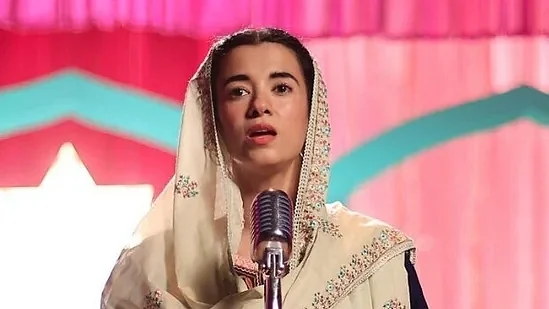Regulating water consumption is a difficult task, but vital in a water-starved state like Maharashtra. Rules and regulations have to be progressive, consensus-based and sustainable in its approach, to which K P Bakshi, Chairman of Maharashtra Water Resources Regulatory Authority (MWRRA) agrees as well. MWRRA, is among the very few water regulators in the country, which is trying to deal with water crisis in the region. K P Bakshi elaborates on the work of MWRRA, the challenges and future targets in a chat with Pankaj Joshi and R N Bhaskar.
Edited Excerpts:
One of key functions of water regulator is pricing the water supply. Can you elaborate on the process?
Tariff setting is a key function of the regulator and tariffs change every third year. I had joined the MWRRA in 2017, just prior to us setting the tariff for 2017-20.
In 2017, we brought through a key innovation that was setting the allocation criteria on differential basis for different industries. For each industry such as paper, bottled water, chemical etc, we set standardised norms per day. This when set against the installed capacity of the unit, would give the amount of allocation of water.
Second was setting different tariffs for different industries. Here we need some perspective, so let us first start with how we price water for agriculture. In the kharif season, we would charge 4.50 paise per cubic metre, which would be doubled to 9 paise in the rabi season, when crops do not have the advantage of being rain-fed. In the hot season, namely from March to June, this goes up to three times, or 13.50 paise per cubic metre.
Here it may be noted that rates have scope to come down. If users get together and register themselves as Water Users Association, there will be a 25 per cent rebate on these rates.
Likewise, if the farmer has invested in micro-irrigation systems, a similar 25 per cent rebate is available. Hence, any registered association member who uses micro irrigation gets water at pretty much half the rates. This is the way we are incentivising better water management and saving.

Now we come to domestic use tariffs. Here we charge urban local bodies. Segregation is into two broad categories—small bodies or Municipalities (which includes Nagar Panchayat) and larger bodies or Municipal Corporations. The former is charged at 18 paise per cubic metre, the latter at 25 paise. Gram Panchayat get water at a slightly lower 15 paise per cubic metre.
On allocation side, we provide 55 litres per capita per day to a Gram Panchayat, 70 litres to per urban and a small (Category C) Municipality, 100 litres to a medium size (Category B) Municipality and 125 litres to a (Category A) large-sized Municipality.
For Municipal Corporations, up to 50 lakh population, we provide 135 litres per capita per day, and beyond that (where only Mumbai comes at present) we provide 150 litres per capita per day.
The last category has larger allocation because such places typically have large regular migrant population, and some budgeting must be done for that.
How does this work out for industrial users? Is there any headway in consumption-based allocation?
For industrial use, it depends on the nature of the activity. Power generation gets 2.5 to 3.5 million cubic metres per MW of capacity, textile gets 170 cubic metres per tonne of capacity, paper would get 200 cubic metre and poultry would get 370 litres per 1,000 birds.
For a bottled-water unit, we would supply 1.4 litres per litre of installed capacity of finished product and for carbonated drinks and liquor units we will supply 2 litres of water per litre of installed capacity of finished product.
Now is the question of tariff, where we make one vital distinction. If water is used for processing, we would charge Rs 4.80 per cubic metre. However if water is a raw material or a key input, we would charge Rs 120 per cubic metre.
In case of allocation, in 2017 we also tried to change the method, from area-based allocation to actual-consumption assessment and allocation on consumption basis, which is much more rational.
Among other things, efficiency of usage is also noted and rewarded. The Government noted our suggestion but implementation is held up because of ground difficulties in setting a monitoring and measuring mechanism.
While setting tariffs, widespread consultation was done and that shows the acceptance levels among the people. Our collection target for 2018-19 was Rs 1,000 crore. Against that, amount collected was Rs 1,100 crore which included arrears of Rs 500 crore.
While we are behind in current year collection, the collection of arrears at such scale points to the widespread acceptance of the principle that water must be paid, and that tariffs levied are reasonable. I believe from here on the timely collections will go up.
This year I expect to have 90 per cent collections on normal basis, excluding arrears. When tariff criteria, allocation, monitoring and collection, all are found to be reasonable, payment resistance gradually goes away.
For perspective, the processor unit pays 100 times more than the basic tariff farmers pay in the kharif season. That shows the extent of consideration towards the agricultural sector.
What are the other important areas of regulatory focus?
Another important area we look at is how to increase the recycle and reuse of water from the domestic sector. Till 2017, the partly-treated-used water from domestic households was released by the urban bodies into the river where it was picked up downstream by some other user.
In 2017, we told the bodies to not release the water, but to monetise it. Treat it, store it and find buyers in the fringe areas. Farmers or industrial units would be fine to take such used water, which is cleaned to a certain standard, at a rate lower than the fresh water tariff.
This has worked well—once the economic viability was established, corporations have now started cleaning water to a greater extent for a better market, pressure on fresh water has come down slightly, and plus river pollution levels have diminished.
The fixing of tariffs here is not in our purview, except that we specify a ceiling such as farmers would not pay more than a 60 per cent equivalent of the fresh water tariff.
For industrial units, rates are negotiated. Our aim is to transform recycling as an economic activity, not just a social necessity. This approach is necessary because in our country, visible development—roads, bridges, structures—get more appreciation and priority from all, rather than invisible developments like water recycling.
Such initiatives remain on priority because of force application from different sides—the High Court, regulators, the National Green Tribunal, pressure groups, some well-intentioned bureaucrats and individuals, and the media. Once the force application comes down, the priority for such initiatives slides down quickly.
Our other priority is volume-based system implementation. Right now volumetric systems are not established in villages, so implementation cannot be done. However, we have overseen a MoU signed in February 2018, between the state government and South Australia, for a technology-based process control implementation.
Once this technology is accessed, we can have remote release of water at the farm gate, where volume is monitored through sensors and farmer does not need to be at the site.
The implementation of the technology at farmer level is not so expensive. Pilot projects are being planned out, and once we have acceptance, implementation can be done swiftly and smoothly.
What is your vision beyond these matters of current focus?
These measures will occupy us in the current tariff cycle. Beyond that is the next 2020-23 cycle where more changes are in the offing. First is to make public consultation and consensus even more widespread, for which our portal is being strengthened.
Hopefully, with internet reach and smartphones, we will replace travel and yet manage a much broader and deeper level of interaction, both in English and Marathi.
The next is impact assessment of measures adopted, orders passed, guidelines given both in the current cycle and prior—what was their impact and did they serve the purpose for which they had been formulated.
The third is enforcement of the mandate we have under Section 11(t) of Chapter III— that all water-related departments should share data into a common database.
Today data sharing is without timely updation, without accuracy parameters, without set formats, and without real-time focus. Once we set this right, there will be better accuracy and better results to our efforts.
There is a need to recognise water as a resource. Today, the user (all categories covered) pays 2-3 per cent of what it actually costs to provide the water.
Bear in mind that cost we calculate does not include the last mile in case of say domestic or association usage. We want the recovery to be 5 per cent in the 2020-23 cycle and 10 per cent in the next.
For saving, we have to reduce losses, through seepage, theft, evaporation and so on. Likewise we need to encourage spread of micro irrigation.
For all this, we need innovations, for which we have recently established a centre of excellence at Kharghar, M-CIPRAW or the Maharashtra Centre for Innovation, Progressive Regulation and Awareness in Water. We must accept that our water use has to be much more efficient, and work accordingly.










